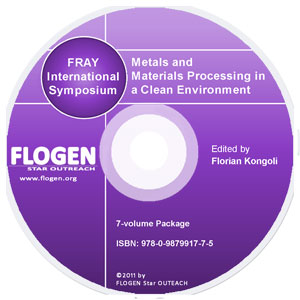
CD shopping page |
2011-Sustainable Industrial Processing Summit
|
| Editors: | Florian K |
| Publisher: | Flogen Star OUTREACH |
| Publication Year: | 2012 |
| Pages: | 646 pages |
| ISBN: | 978-0-9879917-6-8 |
| ISSN: | 2291-1227 (Metals and Materials Processing in a Clean Environment Series) |
Sustainable Panels Manufactured From Forestry By Products Physical Properties: Physical Properties Of Panels.
Magdalena Zaharia1;1UNSW, Sydney, Australia;
Type of Paper: Regular
Id Paper: 251
Topic: 9
Abstract:
Most forestry activities result in large amounts of by-product, which are often treated as waste and sent to landfill. For example, in Australia the eucalyptus and pine tree silviculture industries generate as much as 150 cubic meters of empty pinecones, on an annual basis. These by products are under-used, often found in Christmas decorations, garden mulching or otherwise incinerated, as their disposal in landfill is prohibitive, through sheer volume. The focus of this research is to find the most suitable forestry by-products, adhesives and technologies in Australia to develop sustainable materials for making furniture.These by-products are perfectly suited to the manufacture of panels, as they come clean and dry after processing, and present excellent physical properties when exposed to high humidity environments, particularly when compared to softwood. This makes them particularly suited to applications such as panel furniture in high moisture environments, including kitchen and bathroom sink countertops or drawers where dimensional, swelling and adhesive problems are often an issue. This paper presents results of research into panels made from forestry by-products in Australia, identified as being particularly abundant and underused. The matrices of these composite materials have been chosen from recycled, non-toxic and organic bonding agents, being castor oil and polypropylene adhesives. The main physical properties of the panels are measured and compared with mixes already available in the market.The results show that these new materials compare very well with commercially available counterparts, exceeding their performance in several cases, particularly with respect to water absorption and thickness swelling. These new panels have the potential to become a sustainable replacement option for high-humidity environment furniture panels, made with waste resources.